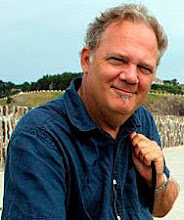When I was about six, we went to the New York World's fair, in Astoria, Queens. There we saw the Futurama, and one of the coolest exhibits showed cars that drove themselves as you sat back and just rode. The
NY Times today has a story about this elusive, yet closer than we think goal.
"These smart cars still have their bugs, but engineers have made amazing progress the past several years. In 2004, when the Defense Advanced Research Projects Agency held its first Grand Challenge for driverless cars, none made it more than seven miles. At Darpa’s next Grand Challenge, in 2005, five cars made it 132 miles to the finish.
And then, last month,
six cars completed a 60-mile course that was the grandest challenge yet because they had to deal with traffic along the way.
These empty cars drove themselves around an Air Force base in Southern California, finding parking spots, obeying stop signs, idling in traffic, yielding to other cars at intersections and merging into traffic at 30 m.p.h. There was one accident and a few near misses, but the cars’ engineers are so buoyed by the results that they’re hoping the next competition will be a high-speed race on a Grand Prix course.
“Within five years, it’s totally feasible to build an autonomous car that will work reliably in several limited domains,” says Sebastian Thrun, a computer scientist at Stanford and head of its racing team, which won the 2005 Darpa competition and finished second in last month’s.
In five years he expects a car that could take over simple chores like breezing along an expressway, inching along in stop-and-go traffic, or parking in the lot at a mall or airport after dropping off the driver.
In 20 years, Dr. Thrun figures half of new cars sold will offer drivers the option of turning over these chores to a computer, but he acknowledges that’s just an educated guess. While he doesn’t doubt cars will be able to drive themselves, he’s not sure how many humans will let them."






